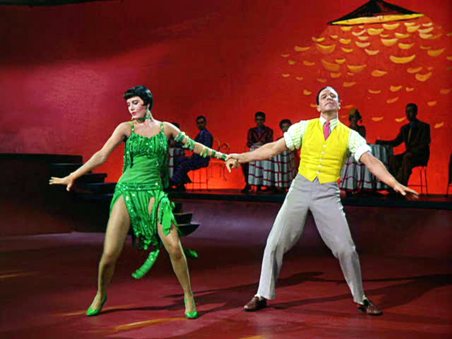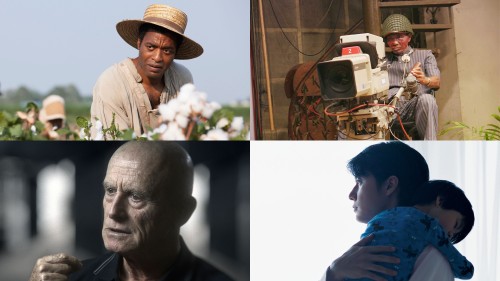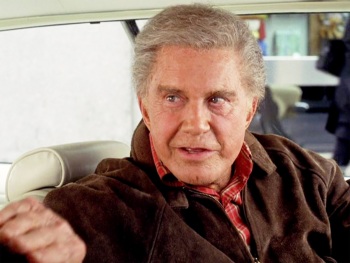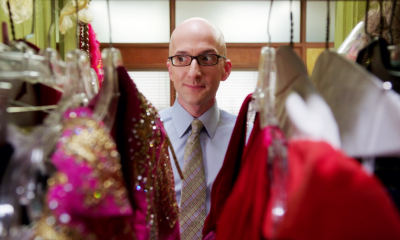
There was a moment when it looked like 2015 would be a pretty miserable year for cinema. A good few moments, to be honest. Battling through my final semester of college, my film viewing was restricted, and it wasn’t until May that I saw the first of the films to make my Top 20 of the year (Mad Max: Fury Road, if you’re asking).
Highly rated horrors It Follows and A Girl Walks Home Alone at Night proved to be effective diversions that thoroughly failed to live up to the hyperbolic heights of the Film Twitter opinion machine. Furious 7 was a delightful (and dumb, but delightful) way to spend my birthday and a night away from my thesis, but that franchise continues to move away from the success of Fast Five. After Mad Max summer descended into a farce of blockbusters: the paint-by-nostalgia monstrosity that was Jurassic World, the lopsidedly bloated Avengers: Age of Ultron, the Roland Emmerich-lite San Andreas.
It was well into autumn before things picked up for me. Some early triumphs from the year made their ways to Netflix, and by then I was working on a project at the Museum of Modern Art, where keeping up to date with the better film releases became little more than a matter of staying late after work. In so many ways 2015 ended a lot better than it began.
It was Star Wars that sealed the deal. Not my favourite film of the year (in fact you’ll see it absent from the list below – but it was a close cut), The Force Awakens proved to have that little bit of magic that has been missing for all too long, a film the world can absorb the hype of that then manages to live up to expectations and be a genuinely terrific film. I saw a late screening opening night, and regardless of reservations, I left the cinema more charged than I can remember being in years.
There were, as always, dabbles in film history to charge me also. Painfully overdue, I finally viewed Kieślowski’s Three Colours trilogy, which lived up to the expectations of that teenager who caught three minutes of White on the TV so many years ago. At the cinema, I caught some real masterpieces for the first time: The Naked Spur, A Star Is Born (1954), The Masque of the Red Death, Fires on the Plain, the five-hour cut of Until the End of the World, Touki Bouki, Lonesome, and a 3D screening of the delirious Kiss Me Kate. Nothing compared to Jeanne Dielman, 23 quai du Commerce, 1080 Bruxelles, which stole my heart and exhausted my mind at MoMA in November, and instantly catapulted itself into the list of very greatest films I have ever seen.
Knowing 2015 would be a busy year, my annual movie challenge was intentionally a light one. Spying an obvious blind spot in my film knowledge – Bollywood – I took to forcing myself to watch one (long) feature a month. I only scraped the surface of course, but I’ve developed an understanding of and passion for this major branch of Indian cinema, its flamboyance, its love of twists and hatred of subtext. I watched essential classics including Zanjeer, Mother India, and Mughal-e-Azam, as well as recent hits like Dilwale Dulhania Le Jayenge and 3 Idiots, and even contemporary madness like Dhoom, Dhoom 2, and Enthiran. I’ll be watching more in future, and I can’t recommend enough that film fans who have yet to dip their toes in Bollywood streams take care of that, and see what a sixth of people on earth considers mainstream cinema.
So on to the films of the year. As always I missed a few things. Beasts of No Nation, despite being right there on Netflix, never got seen. Clouds of Sils Maria, Bridge of Spides, Magic Mike XXL, and Creed similarly got missed. Some lauded films were appreciated, but fell short for me, like Straight Outta Compton, Mission: Impossible – Rogue Nation, The Hateful Eight, and The Revenant. Films that narrowly didn’t make my Top 20 include Mistress America, Tangerine, Taxi, James White, Star Wars: The Force Awakens, Song of the Sea, and The Big Short. The terrific farce 7 Days of Hell was considered, but rejected for the same reason A Very Murray Christmas, the worst thing I saw all year, doesn’t feature in my worst-of list – they’re both productions designed for home viewing and barely of a length to qualify as features.
Now, who enjoys a good list?
20. Queen of Earth
Alex Ross Perry’s psychological drama about the breakdown of friendship between two millenial yuppies is peppered with nightmarish oddities that keep the viewer on their toes. It’s violently negative in its lack of faith in people supporting one another in need, but not unjustifiably so. Shot in bright airy spaces, but the focus is on intense close-ups that further alienate the characters from each other. Elisabeth Moss gave one of the year’s most committed performances.
19. Youth
Still struggling to recreate his earlier successes in The Consequences of Love and (the near-perfect) Il Divo, Paolo Sorrentino has made his best film in seven years. It focuses on two elderly artist friends hiding from the world in a Swiss spa. Michael Caine is the retired classical composer who peaked too soon, Harvey Keitel is the Scorsese-like filmmaker who keeps pumping out films that cannot compare to the works of his youth. Finely acted and sublimely scored, and featuring a deluge of Sorrentino’s delicious, unexplained eccentricities, it is hampered only by its dialogue, which feels all too scabrously translated from Italian.
18. Ex Machina
As sci-fi continues to recapture the public imagination (2015 was quite a good year for it overall), this unexpected gem, a sexy Asimovian tale of A.I. versus real en-souled intelligence, became a surprise favourite for many. Written and directed by Alex Garland, known best for writing Danny Boyle’s sci-fi ventures, this was a slickly produced psychological thriller that brought together demi-perspex android Alicia Vikander and 2015 MVP Domhnall Gleeson’s computer expert for the ultimate Voight-Kampff test. Oscar Isaac’s untrustworthy tech billionaire, all creatine and superego, stole the show, along with the lush visuals. A mishandled finale was the only sour note.
17. Phoenix
Christian Petzold, the emerging master of German historical melodrama, weaves a strangely original yarn in Phoenix, in which a Holocaust survivor attempts to uncover if her husband served her up to the Nazis. Unrecognisable after reconsructive surgery, she is hired by her husband to impersonate his supposedly dead wife to claim an inheritance. The greater mystery is therefore known to us, creating a scintilating game of cat and mouse. Impressive period detail, Nina Hoss’s restrained performance and a jawdropping conclusion make it one to remember.
16. Sicario
What should feel overly familiar, another tale of cynical cops and murderous cartels, is given new life and energy in Denis Villeneuve’s Sicario. The descent of Emily Blunt’s FBI agent from go-getting SWAT member, to toughened special forces volunteer, to exhausted, disillusioned survivor, stands as a superb metaphor for the bewildering War on Drugs. Smart dialogue and incredible cinematography by Roger Deakins (the night vision sequence was one of the year’s finest) saw it through clunkier moments; it leaves a lasting impression.
15. Goodnight Mommy
The old dark house of classic horror is here replaced with a soulless, polished modernist monolith, a bright white country house full of dark terrors. A pair of twins – spritely, Aryan-looking – begin to suspect that their mother is no longer who she claims to be. A nasty game of powerplay ensues, with the story cleverly shifting the viewer’s allegience. Keenly cut and often blackly comic, it’s a skin-crawling horror that reinvents torture porn as Oedipal nightmare.
14. The Assassin
Hou Hsiao-Hsien’s stunning wuxia fable was one of 2015’s most beautiful and most frustrating films. With an intentionally obtuse storyline and an editing style that cuts away from the main action on a whim, it is not a film that satisfies a hunger for solid storytelling. What it does have however are exquisitely lush production values and, in its star Shu Qi, a remarkable feminine intensity. Many of the year’s most arresting images were imbedded in this work, in particular a dramatic cliffside confrontation slowly enwrapped in mist.
13. Inside Out
Pixar rarely let us down, but lately their hits have numbered their misses. But their hits remain some of the smartest, most charming and most universally appealing films to come out of Hollywood today. Pete Docter, responsible for Monsters, Inc. and Up, here takes us inside the mind of a young preteen, demonstrating her emotional turmoil through anthropomorphised emotions that dwell in a sci-fi wonderland; part playground, part bureaucratic stampede. The characters both inside and out carry the film’s hefty emotional punch, and the designs are handsome and witty. Only its repetitive, stop-and-start adventure narrative prevents it from being listed with the very top of the Pixar pantheon.
12. Brooklyn
Old-fashioned in the best possible way, director John Crowley’s take on Colm Tóibín’s novel, adapted by Nick Hornby, puts its money where its heart is. Saoirse Ronan beams as Eilis, a shy parochial Irish girl who moves to New York to better herself, and soon emerges from her shell, only to be torn between her new home and the one she left behind. Plus there’s an ideal romantic match on both sides of the Atlantic. Excellent period detail and finely paced, simple human drama create something traditional yet timely. Earnest, genuine, and unironic storytelling.
11. Spotlight
Telling the story of how The Boston Globe broke the news of massive cover-ups of paedophilia within the Catholic Church, Spotlight repeatedly evokes the champion of the investigative news genre, All the President’s Men. While never quite reaching its forebear’s heights, it recaptures much of its energy, making the gathering of information or the biting of a new lead as thrilling as a gun battle or foot chase. It is functionally, unshowily shot, with some choice montage work, but it’s the slowly building story and the great performances, most notably Mark Ruffalo, that made this one of the year’s most surprisingly powerful dramas.
10. Anomalisa
Resurrecting a 10-year-old stage play, the unique surrealist Charlie Kaufman chose to visualise this tale of depression and isolation in stop-motion animation form. The antihero of the film, Michael, is so cut-off, introspective and self-obsessive, that he perceives every stranger as sharing the same, expressionless face, each bearing actor Tom Noonan’s barely shifting tones. A chance encounter with Lisa, wearing her own 3D-printed face and wielding Jennifer Jason Leigh’s sweet voice, evolves into a simple love affair with complex repercussions. At times hilarious, tragic, or nightmarish, it sculpts two incredible character studies as rich as the miniature universe built to house them. The shower scene alone guarantees this one immortality.
9. The Duke of Burgundy
Peter Strickland has emerged as a late British Lynch, an artist who understands the film camera as a literal dream machine, producing deep truth from the illogical. In this, his third dramatic feature, he explores female sexuality through a series of twisting sexual games of cat-and-mouse, as a lesbian couple indulge in sado-masochistic role-play in opulent fashion. The lavish English country estate décor, sensuous lingerie and extensive all-female cast create a gratifying otherworldliness, while the rich cinematography, sharp cutting and unexpected insect imagery add to Strickland’s ethereal scenario an extra sexy pinch.
8. The Look of Silence
The companion piece to 2012’s untouchable The Act of Killing, The Look of Silence sees Joshua Oppenheimer turn away from the perpetrators of Indonesia’s anti-communist genocide to look at its victims, and the survivors. In a metaphor too perfect for fiction, clear sight is given to us through an optician (or supposed optician), a man whose brother was savagely slain by government-backed gangsters. He visits these older gangsters, now local big wigs, and while performing eye exams, has them probe their despicable pasts for reasonings and methods. Mixing gut-wrenching old video testament with brightly shot contemporary footage, Oppenheimer hints that an emotional cleansing is possible, but all too late for our protagonist and his withering parents.
7. Mad Max: Fury Road
Just when reboots and remakes and all-too-late sequels were becoming old-hat, George Miller undid more than a decade’s worth of talking animal abuse to bring back Max Rockatansky from his shallow, sandy, post-apocalyptic grave. An adrenaline-pumping extended chase sequence of a movie, Fury Road has all the thump and energy of the finest post-’90s action cinema with the dedicated, unpatronising world-building of ’80s fantasy. Tom Hardy grunts as Max, while Charlize Theron stands a one-armed feminist archangel as Imperator Furiosa, a second-tier thug in a cultish tribe who decides enough is enough in the face of crippling misogyny and rape. With exquisite stunts and mind-boggling costume and vehicle design, Fury Road is that rare art film in blockbuster’s clothing. Indulgences in the thrill of the chase undermine the broader themes at times, but this is still exceptional filmmaking from start to finish.
6. The Tribe
Part gangster movie, part coming-of-age tale, part pitch-black parody of high school dramas, The Tribe is a monstrous and brilliant work. Set at a Ukrainian school for the deaf, the dialogue is entirely in sign language, without accompanying translation of any kind. The audience is thus forced to engage doubly with the material, to absorb what story it can while the thunderous, angered performances confront them head on. Extended shots without cuts for interruption draw you further in, only to be assaulted by a McDonagh-ian propensity for sudden, horrifying violence. Other sequences our ears pick up the important sounds that could mean life-or-death for the characters on screen. It is a hopeless look at an isolated, noiseless world, that milks the potential of cinema to both reveal and conceal for everything it’s got.
5. The Martian
Another story of survival in space – so what makes this one different? Well for starters, Matt Damon gives his finest performance in a decade in one of his greatest roles, as astronaut Mark Watney, a cocksure scientist whose wit and ego are enough to just about sustain him after he is abandoned on Mars in a dust storm. His quest to stay alive with limited resources is created with real (or at least believable) science and exceptional wit, through Drew Goddard’s bouncy screenplay and Damon’s sardonic delivery. The momentum jumps along at a solid pace, while sequences on Mars, Earth, and in space sustain the drama without an ounce of fat. Ridley Scott, working as a director for hire, commits to a great project, tying together excellent location shooting (in Jordan) and expertly deployed special effects. A testament to human perseverance, a uniquely smart blockbuster, and just a really good time at the movies.
4. Son of Saul
Shot on 35mm with needle-point-shallow focus, Hungarian filmmaker László Nemes’s debut feature redefines ‘harrowing’, by bringing you into the whirling hell of a Nazi death camp and refusing to let you out. The sensational Géza Röhrig is Saul, a Jewish prisoner fit enough to be part of the team who assist in the mass murder of their own people, and thus an enforced collaborator. His impossible last chance for redemption is to save the corpse of a young man (his son, perhaps?) from the furnace, but escalating events in the camp block his way at every hurdle. An exhausting, frustrating and beautiful work, that dares to reveal the darkest, unwhispered barbarities of the Holocaust.
3. 45 Years
The year’s simplest, meatiest tragedy, Andrew Haigh’s 45 Years feels like the untold not-so-happy ending to many of the greatest love stories. An older couple is about to celebrate their 45th wedding anniversary when he receives a letter regarding a lost love from his past. The nostalgia and sadness bred in him stirs regret and paranoia in his wife, threatening not just the occasion, but the legacy of their relationship. Capturing beautiful moments of human interaction and shot from a permanently respectful distance, 45 Years is a remarkable story that triumphs through its two stars, the resurrected ’60s heartthrob Tom Courtenay, and the irrepressible Charlotte Rampling, at her very finest.
2. Carol
Todd Haynes’s sumptuous, delicious film of forbidden love in 1950s New York hits with an emotional wallop, as wide-eyed salesgirl Therese (Rooney Mara) meets older divorcee-to-be Carol (Cate Blanchett), and embarks upon a seemingly doomed lesbian romance. Made up of perfectly framed glances and erotically charged conversations, Carol highlights the cruelty of the attitudes of the time without preaching or descending into melodrama. The period detail and lighting astonish, while the score by Carter Burwell captures and holds the energy of the drama. But it’s the performances by the film’s two female leads that make this one for the ages. Heartfelt and empathetic, they carry their flawed characters with immense pride right through to the heart-stopping finale.
1. Hard to Be a God
One of the defining qualities of a great movie is that it either shows you something that has never been seen before, or tells a story that is unlike any you have ever seen. It has been too long since a film did both. Aleksei German’s final film (it was completed in post after his death), shot over six years, originates in a novel by Russian authors Arkady and Boris Strugatsky, who wrote the work on which Tarkovsky’s Stalker was based. It is about a group of human scientists observing a world almost identical to Earth, but still in, and seemingly stuck in, the Middle Ages. In an explosive performance, Leonid Yarmolnik plays Don Rumata, a human observer succumbed to extraordinary hubris, encouraging the peasants of this backwards planet to treat him as a god. The themes of madness and decline are handled with the gravitas they deserve, but the film retains a casual cheekiness throughout, defiantly grotesque and dirty. The lengthy takes with roving handheld cameras get you right up in the thick of it; you can almost smell the sweat and mud. German has done the near impossible, rigidly blocking his scenes despite the wild camera movements, so that his frame is perpetually full, busy, and yet with no action obscured. It is monumental filmmaking, beautiful and hideous and deep.

Good god, man!
—————————————————————–
So as for the worst films of 2015, well, for a year that never seemed like it was going to be a good year for cinema until the last minute, it never looked much like a bad year either. I never saw Mortdecai or Rock the Kasbah or Pan or Terminator: Typo. End-of-the-world examples of cynical capitalist cinema in the guise of Jurassic World or Minions were so blandly efficient as to escape this list. Here’s what utterly disappointed or downright infuriated this past year.
5. The Good Dinosaur
One step forward and one step back is Pixar’s game right now. This mindlessly banal tripe is only a patch above Cars 2 in that studio’s canon. It’s utterly unbelievable, uncrafted world, with barely a dozen dinosaur inhabitants implying rampant inbreeding, its rehashed boy-and-his-dog plot that goes nowhere new, its lazy voicework and godawful twangy score, all add up to bad family entertainment. The backgrounds are, admittedly, extraordinarily illustrated, but that’s no use when the characters in front of them look like Aardman characters crafted from nasal drippings. The magic mushrooms scene was the most socially and ethically misjudged moment in an American movie all year, and I’m including Entourage in that.
4. Taken 3
Climbing its way up from the very bottom a few years back, the Taken franchise now no longer feels like an advertising campaign for ISIS, at least. But this remains truly exhausted action garbage, with growling and exhausted Liam Neeson killing all the Russians in America after his ex-wife is murdered in a desperate attempt to raise the stakes. The action sequences barely thrill (as they barely thrilled when seen in the trailers), and Forest Whitaker only serves to depress with his role-slumming. The dramatic ending is gloriously, unintentionally laughable.
3. The Editor
Genre spoofs are not easy, and this attempt to lampoon giallo and B-movie horror manages to bungle everything from the get-go. The look, the rhythms, the acting styles are all wrong, as if no one involved actually bothered to watch a giallo beforehand, or thought a movie all about analogue film editing might wanna look like it’s being shown on old film. The murder mystery isn’t intriguing, the horror isn’t frightening and the gags just aren’t funny – desperate as it is to find comedy in old-timey Italian misogyny, it comes off as disinterested in appearing at all respectful to women. At least it tried, but it failed utterly.
2. Fantastic Four
The superhero reboot no one asked for became the film no one wanted, including, it would seem, the actors or filmmakers involved. Every step is so blatantly miscalculated, from the casting (Jamie Bell as tough guy Ben, Michael B. Jordan as lovable fop Johnny, Toby Kebbell as someone with an accent) to the overly realistic look, to the epic score played over characters crossing the street or typing things into computers. Supposedly plagued by production issues, its bipolar switch in the second act reveals that no one could quite agree what kind of movie they were making. For once with a messy major Marvel-based project, the box office reflected this.
1. The Loft
Erik Van Looy’s remake of his own modestly successful Belgian thriller Loft, this is an uncompromising study in bad filmmaking. An unengaging murder mystery, that doubles as a deeply unsexy erotic thriller, The Loft starts off on the most wrong foot by having its five male stars buy an apartment together in which to cheat on their wives. By the time a dead body turns up, we already want all these men locked away for it regardless of their role in the murder. Painful miscasting and excruciating dialogue build up to a pathetic series of convoluted twists. Men’s rights activist cinema, with all the talent you imagine goes with that.
And with that, onward into 2016…



























